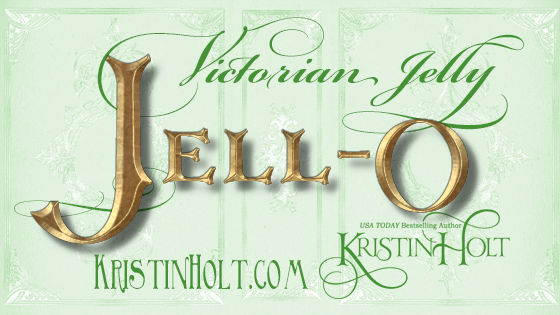
by Kristin Holt | Jul 23, 2022 | Articles
After the advent of Victorian commercially prepared gelatin came colored, flavored boxed gelatin. The Jell-O brand was born in 1899. The new brand’s four-flavor line-up was well-received by housekeepers (wives), and continually promoted by the food manufacturer. Newspaper recipes urged cooks to rely on Jell-O brand gelatin in dessert making.
Don’t miss any one of this 8-part blog series on Victorian America’s Jellies.

by Kristin Holt | Feb 18, 2021 | Articles
Nineteenth century breads often called for “a teacup of yeast,” a huge amount compared to today’s recipes. Victorian-era housekeepers (e.g. wives) made their yeast. And continued to whip up fresh batches of yeast (with a touch of the last batch as a starter) well after commercially prepared yeast waited on grocer’s shelves.

by Kristin Holt | Jun 18, 2018 | Articles
While researching dentistry in 1890 for an accurate setting for my title, Isabella’s Calico Groom, I was quite surprised by how advanced and “modern” (by today’s standards) dentistry was. Significant advances in dentistry had occurred in the previous decades, making dentistry truly “modern” compared to patients’ previous experiences. The sheer quantity and magnitude of improvements in dentistry qualify dentists of the 1890s to claim “Modern Dentistry” in their advertisements.

by Kristin Holt | Feb 10, 2018 | Articles
Flour sifters are an important part of baking–today, and in the Victorian Era. Would you be surprised to learn the first flour sifter was patented by an American? See a timeline of Victorian-era advertisements for sifters and flour sieves, flour bins (canisters or extraordinary sizes) with built-in sieves, patents for early sifters and sieve holders, and a perspective of price. The advertising, alone, sheds light on why 19th century cooks were persuaded to purchase and use these devices.

by Kristin Holt | Jan 30, 2018 | Articles
The story behind the invention (development?) of Angel Food Cake is a bit shrouded in tales of “Me, First!” Vintage newspaper advertisements show Angel Food Cake for sale in bakeries by 1878, and in cookbooks for home bakers that same year. One of the origin stories made it into a vintage cookbook (“cook book”), along with minor variations on the fluffy, snow-white theme. No matter how the dessert began, the popularity took off among Victorian bakers and remained popular through the Edwardian and Progressive Era. One peek at Pinterest vouches that this brightly white cake is still popular (even when pink).













